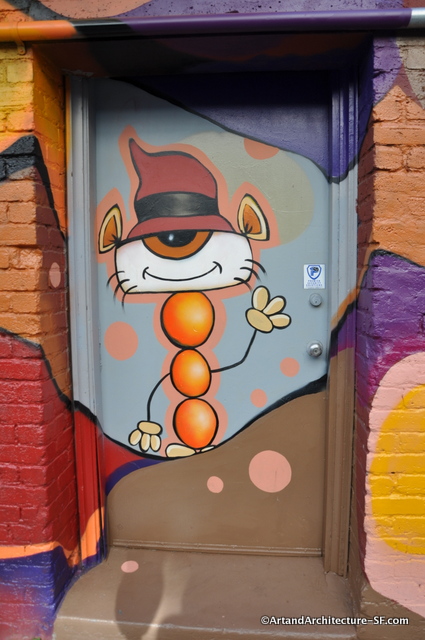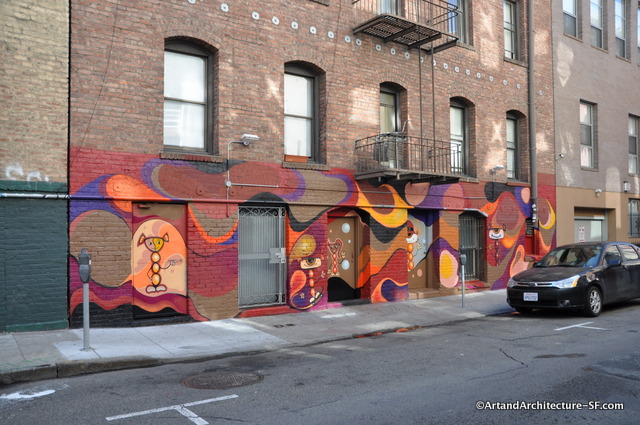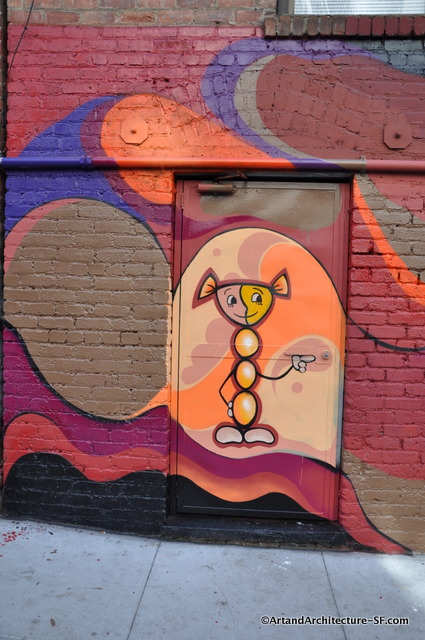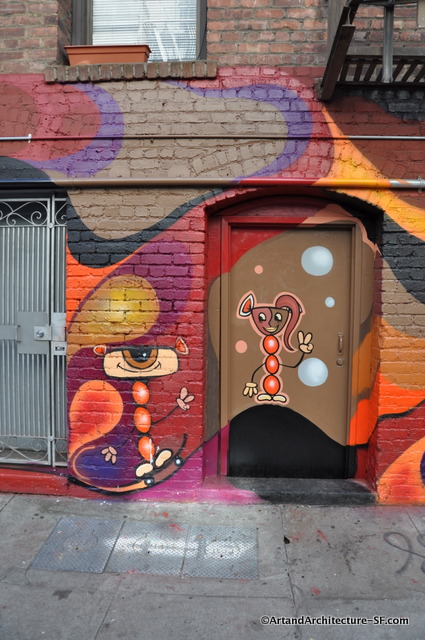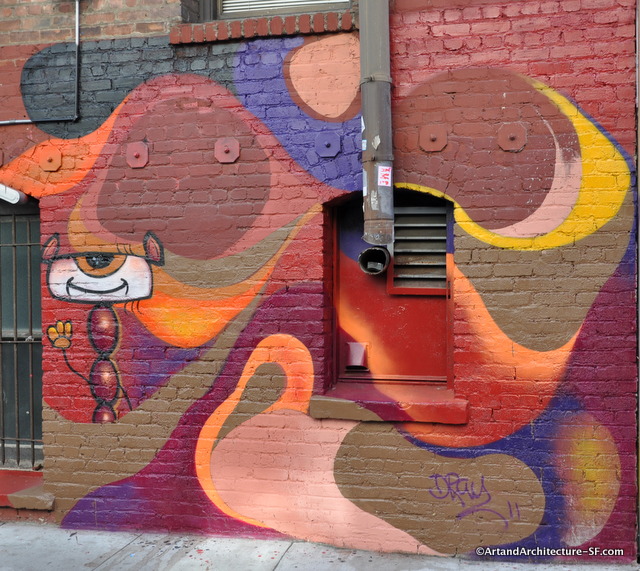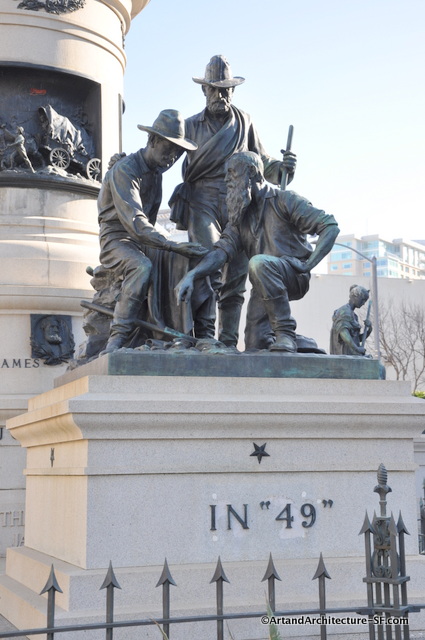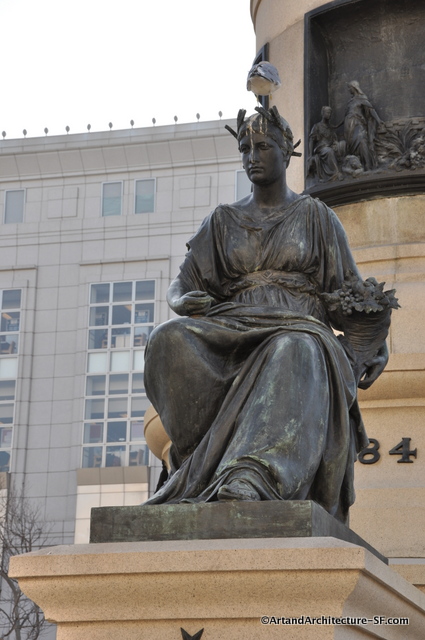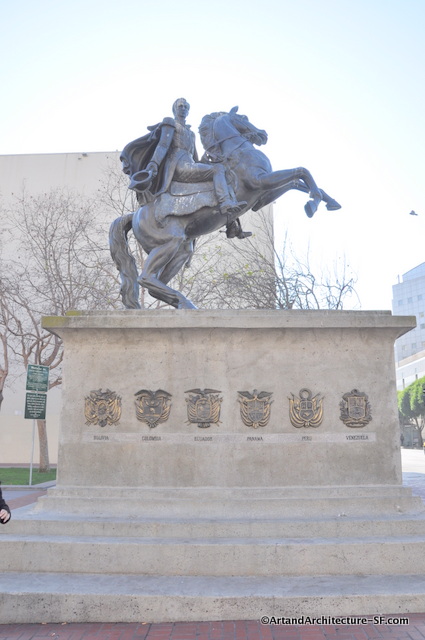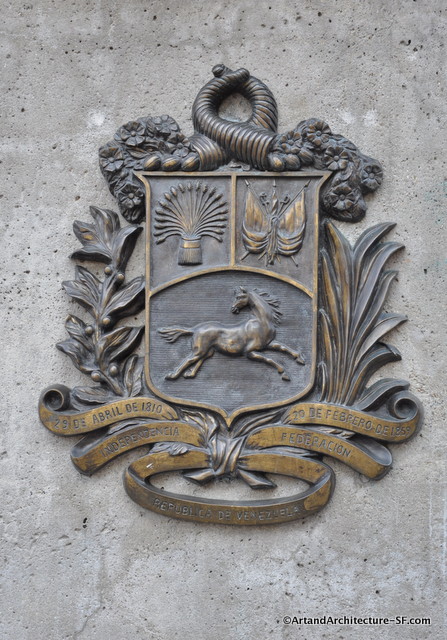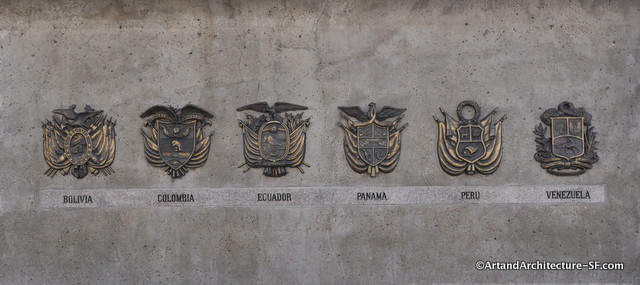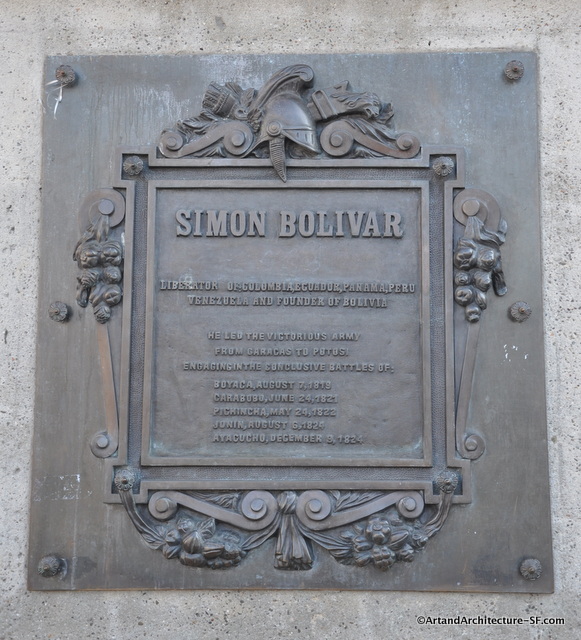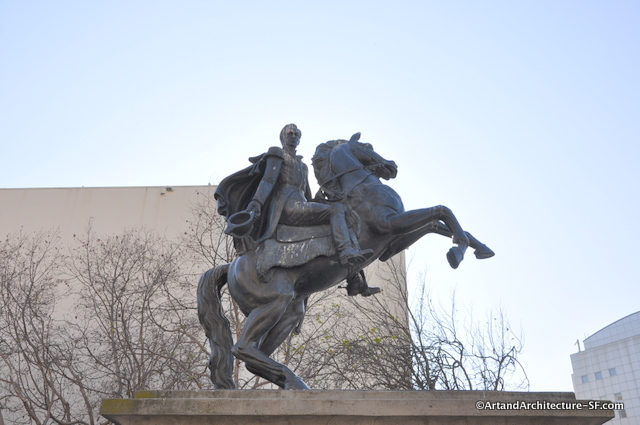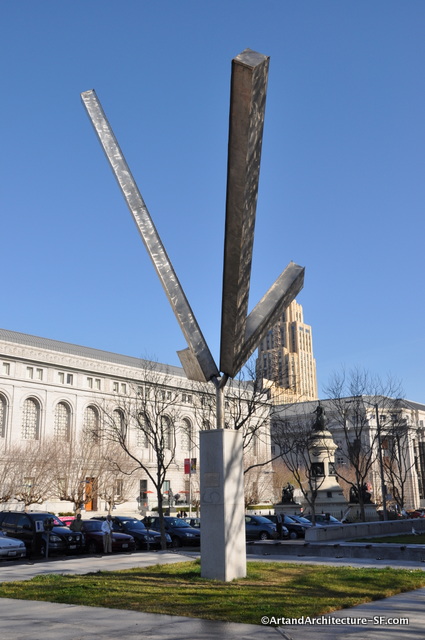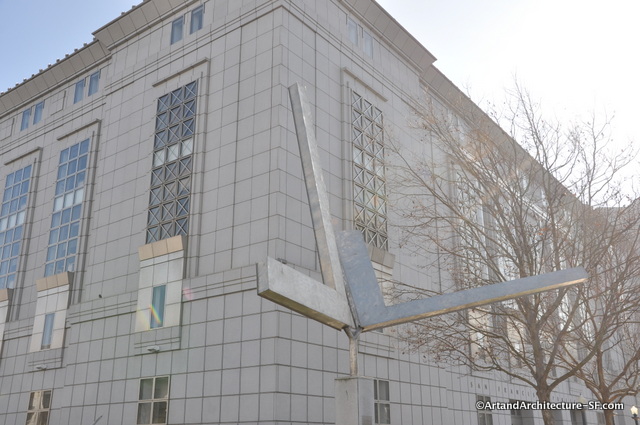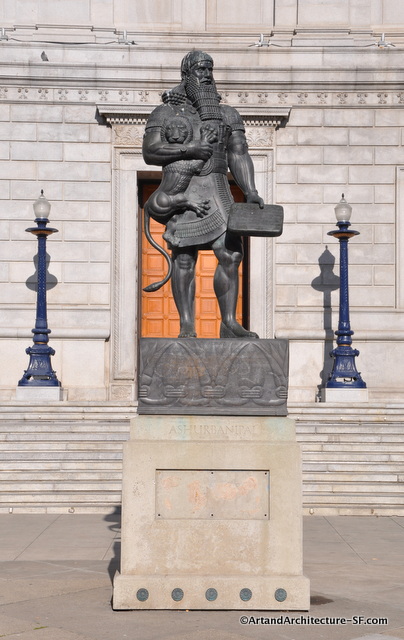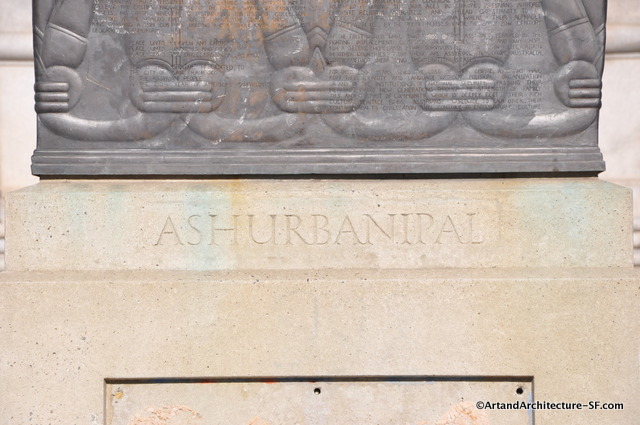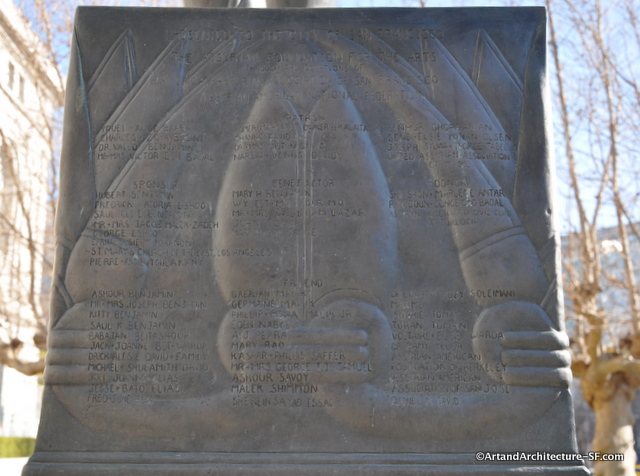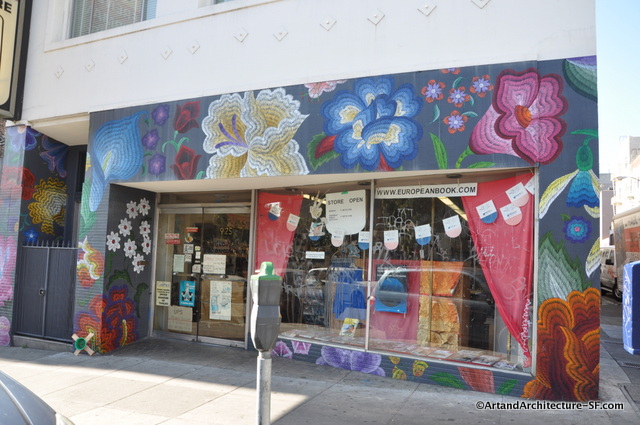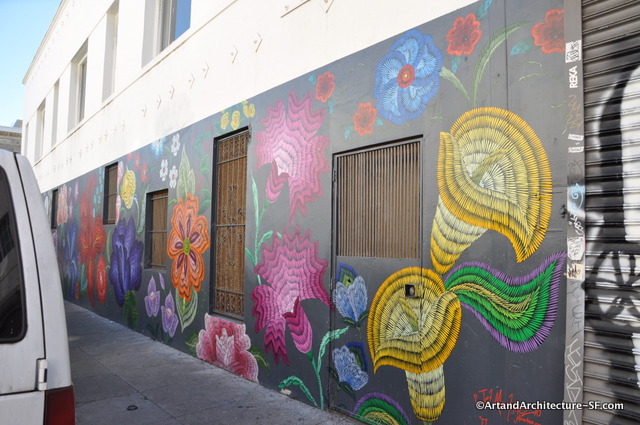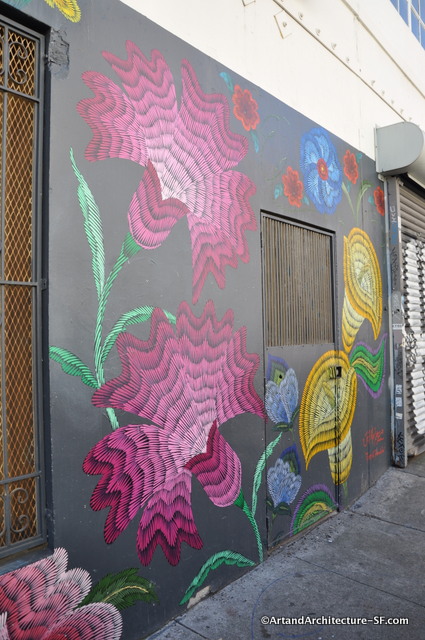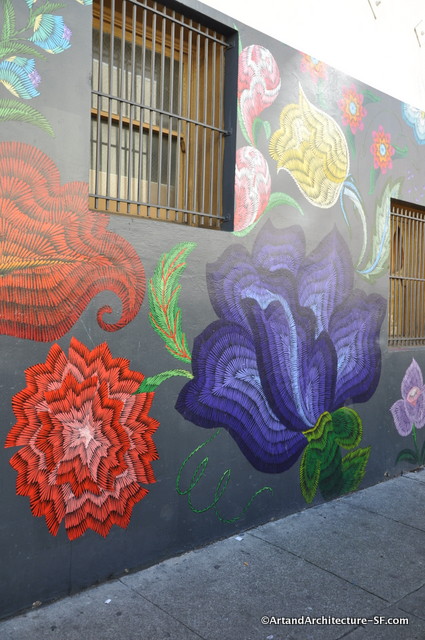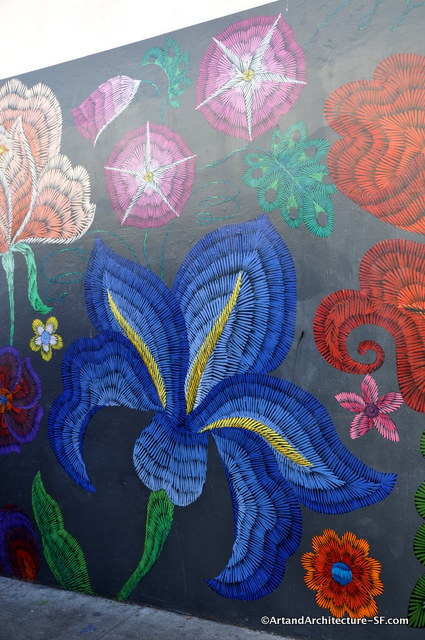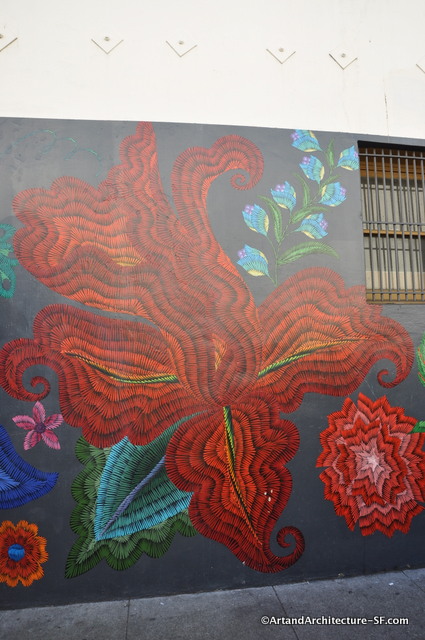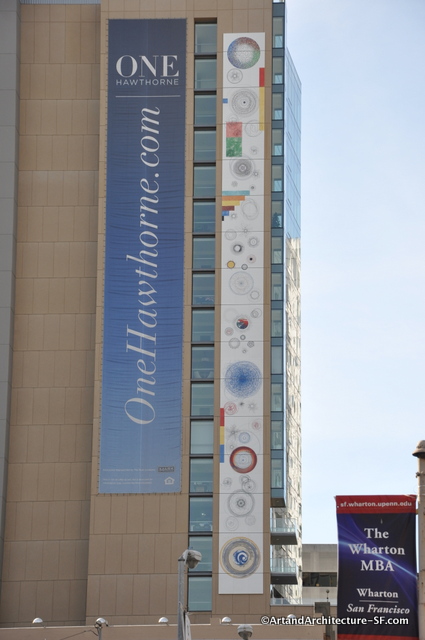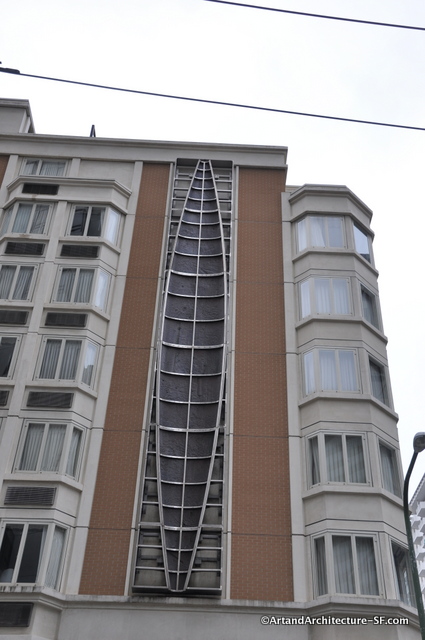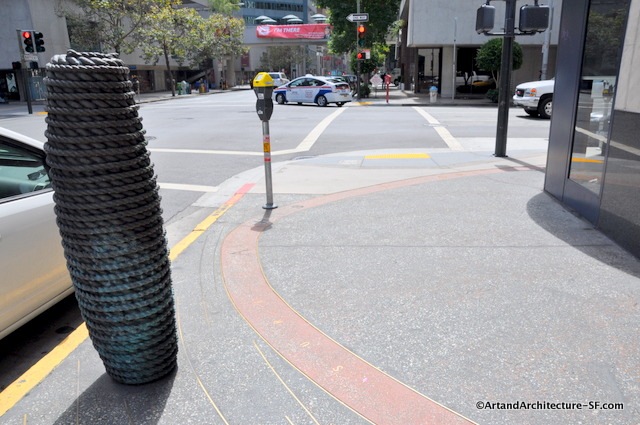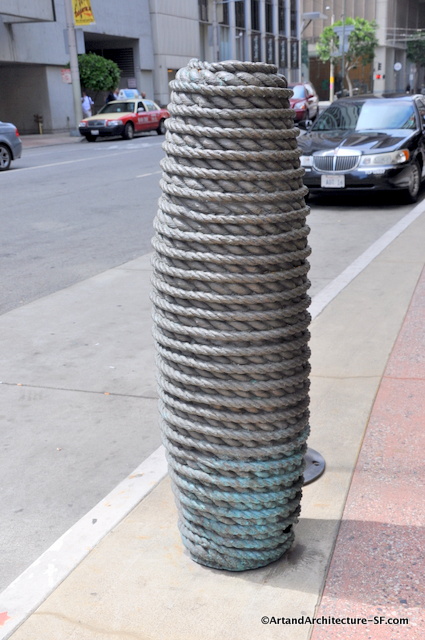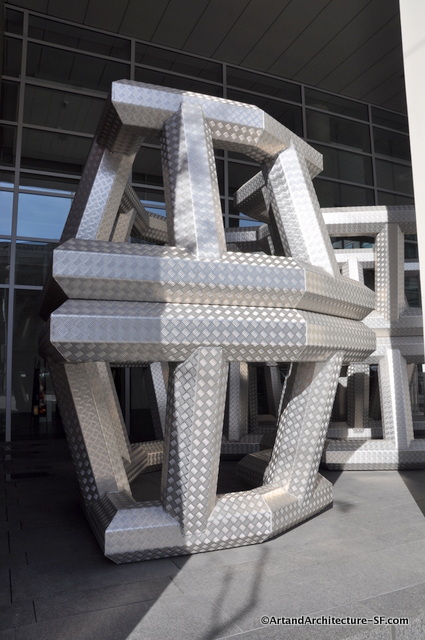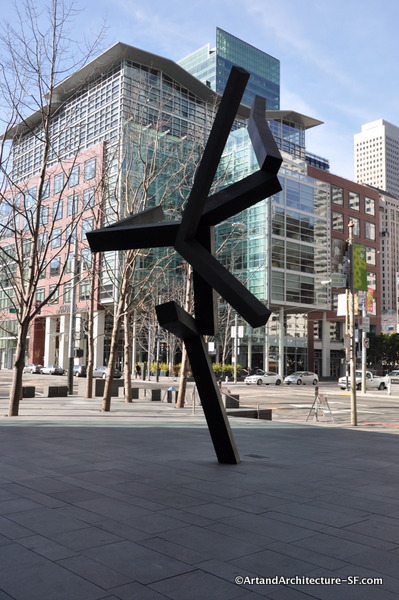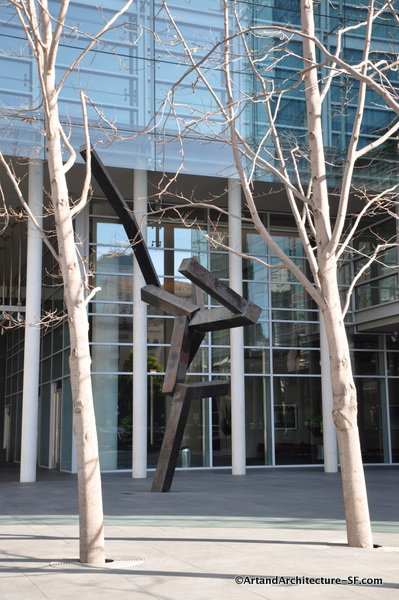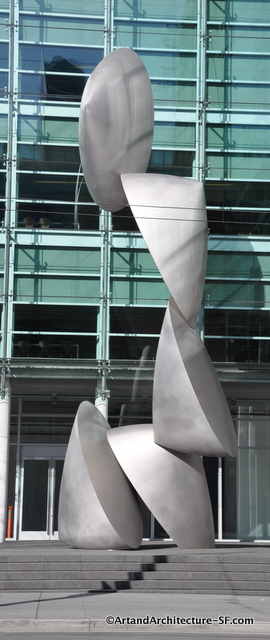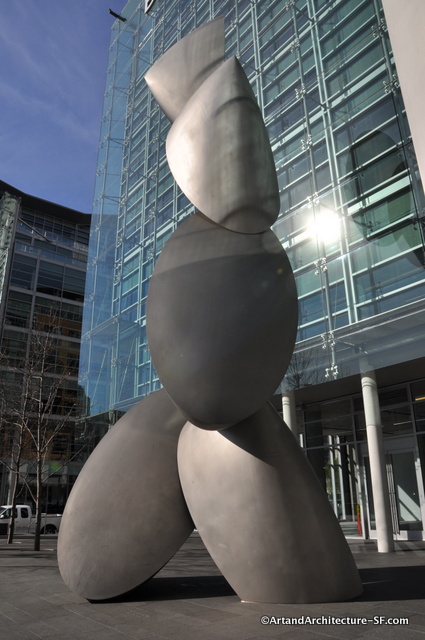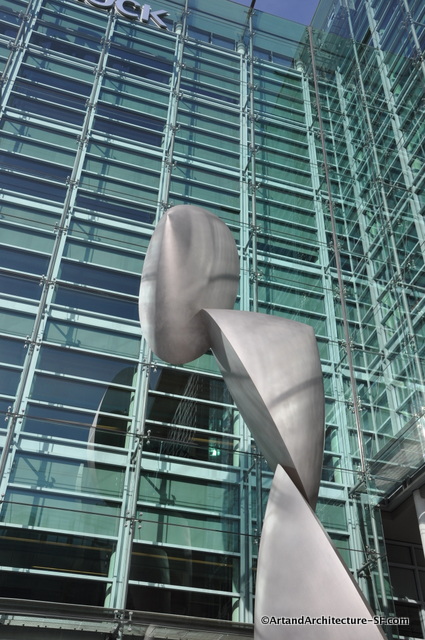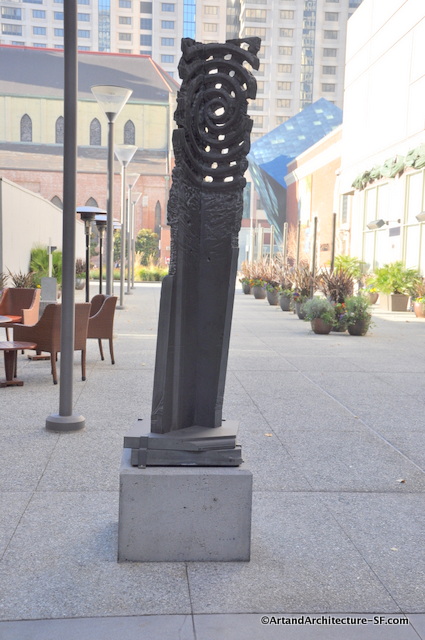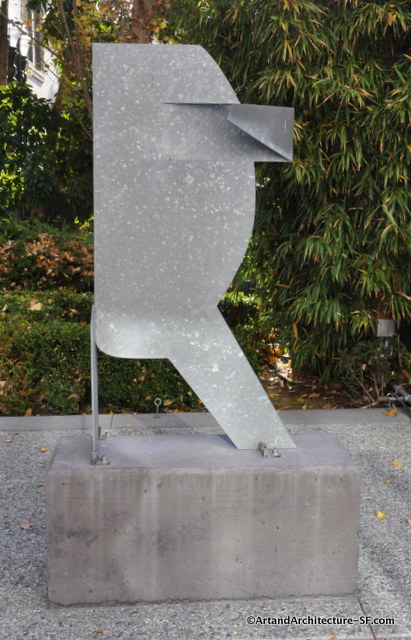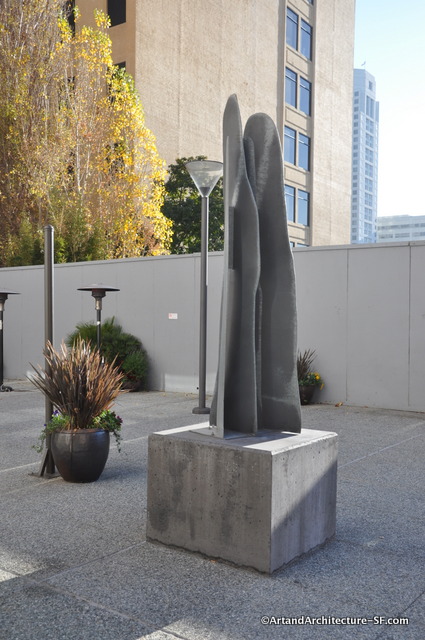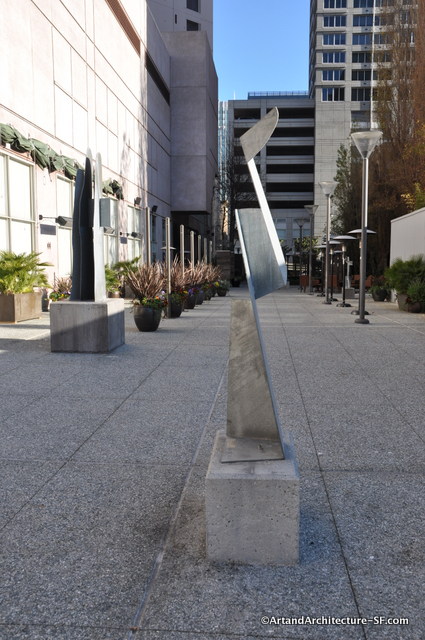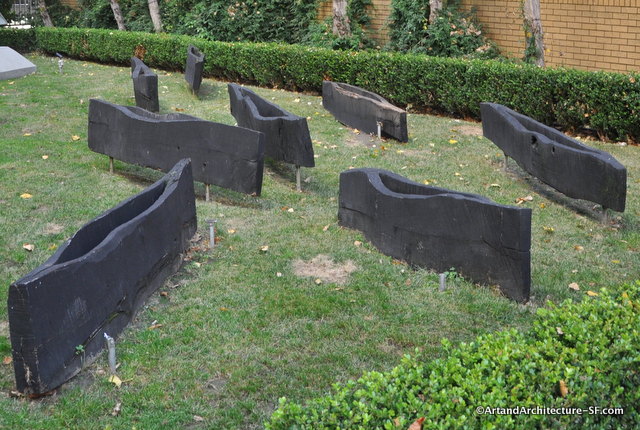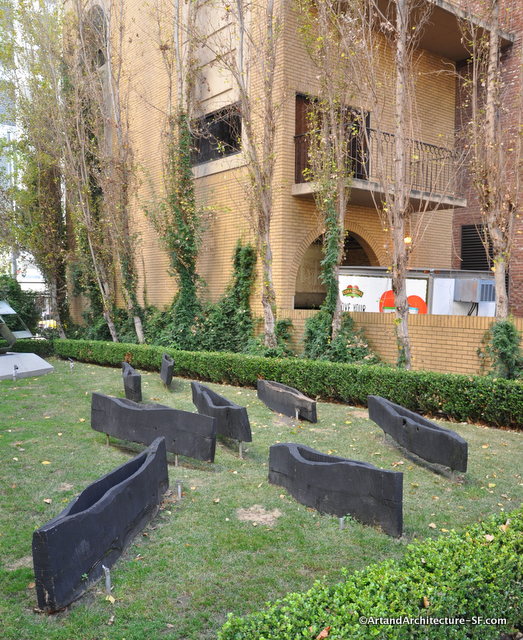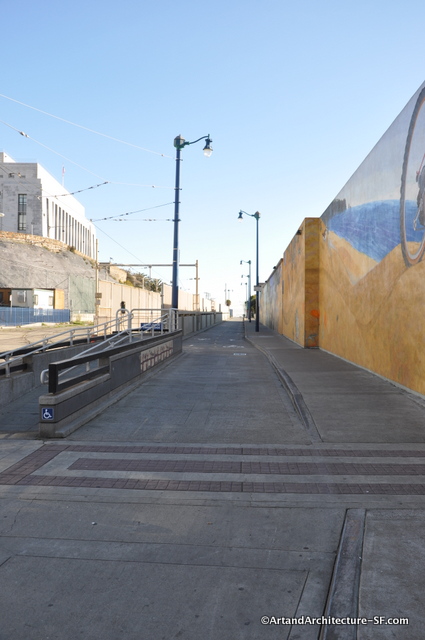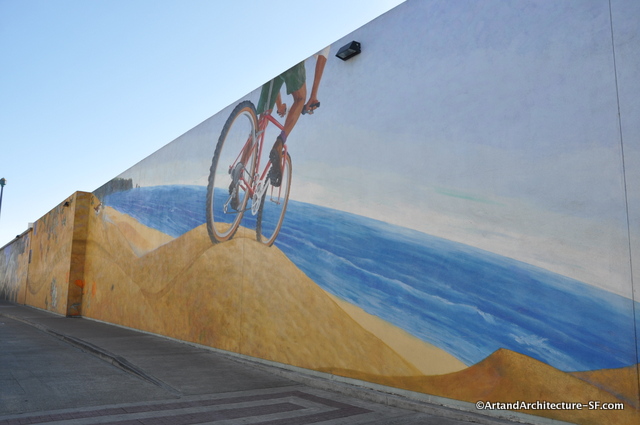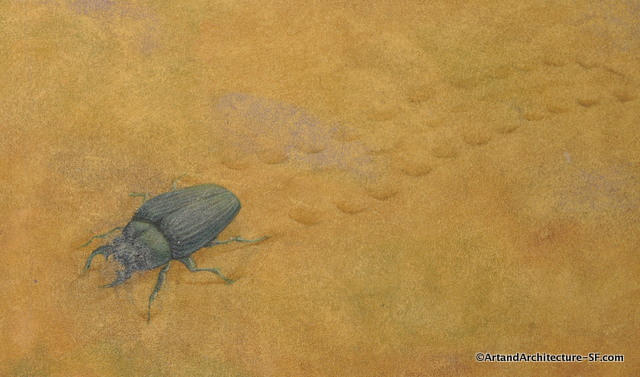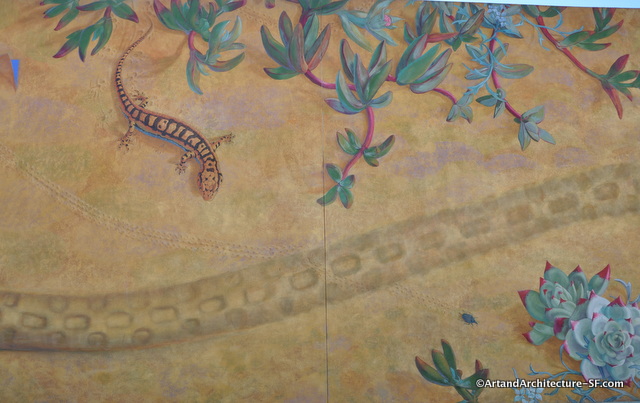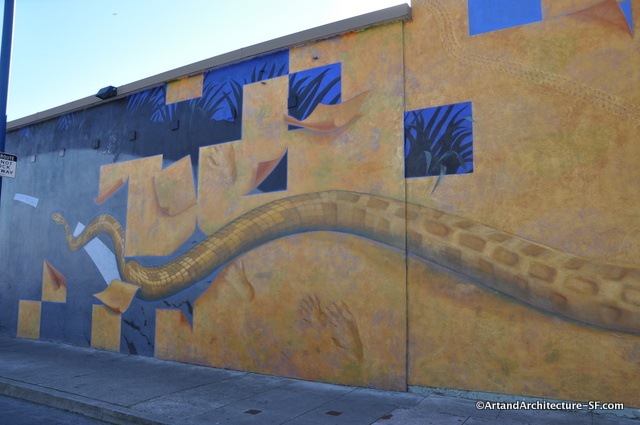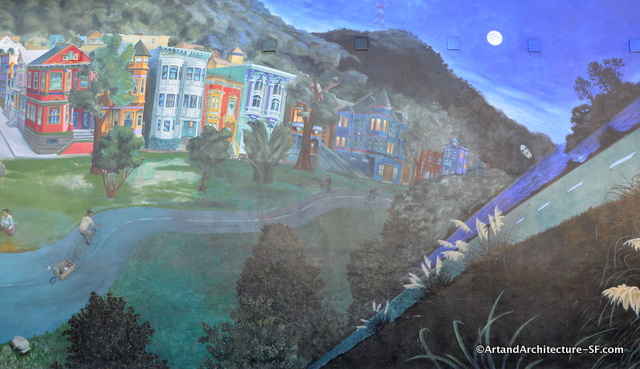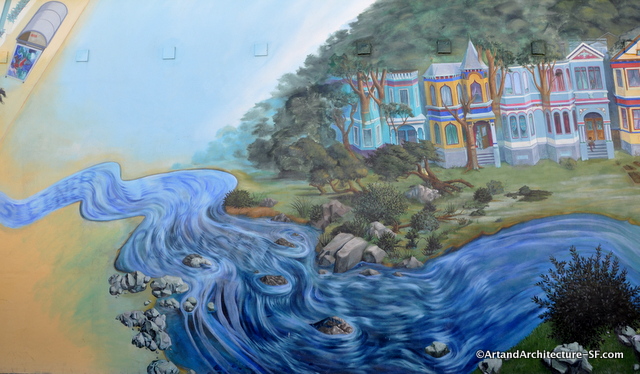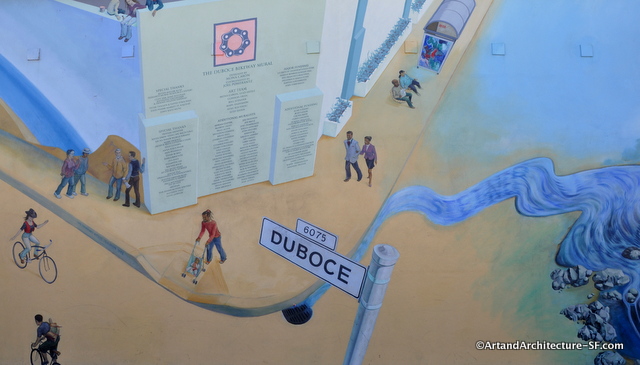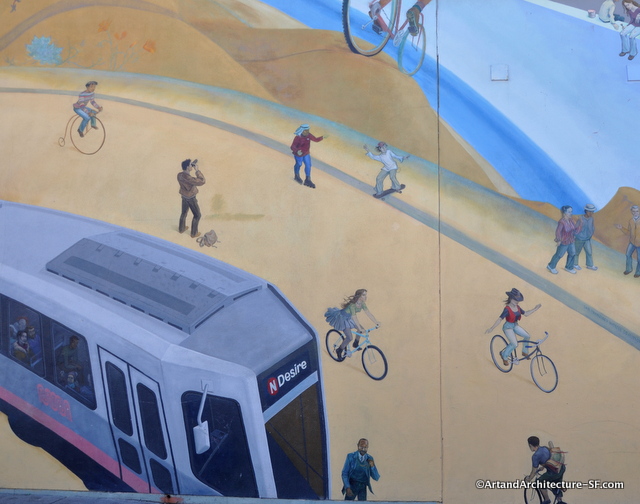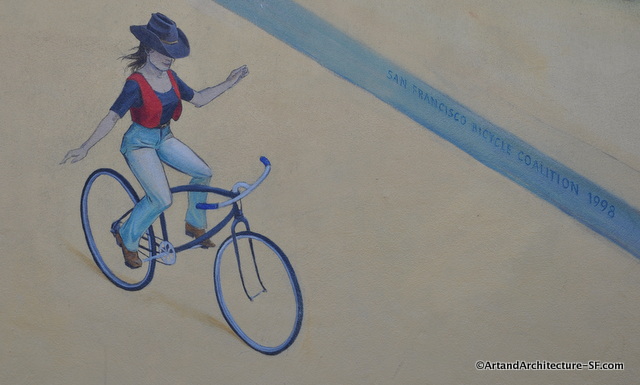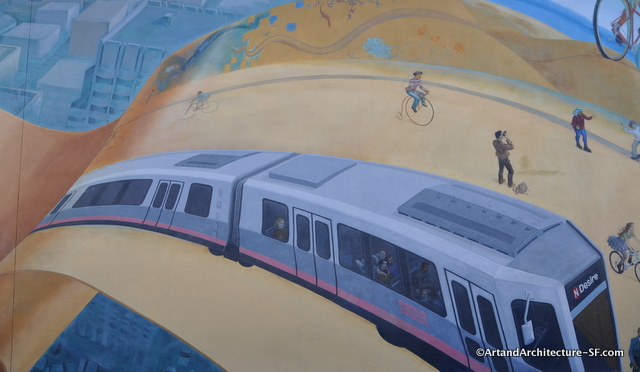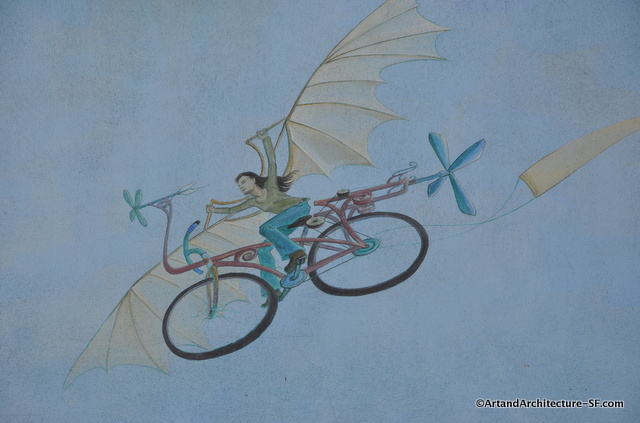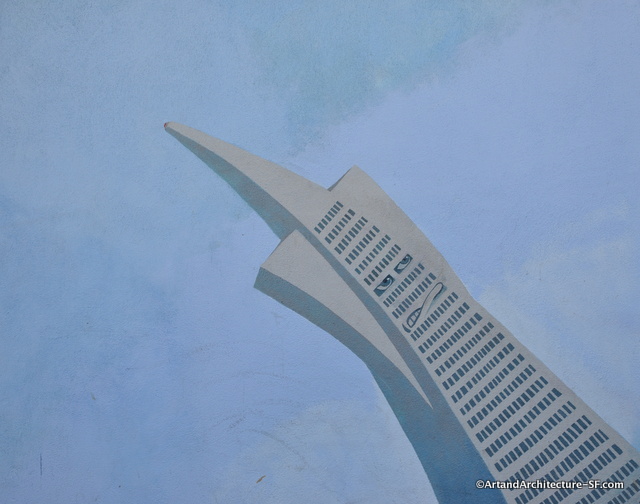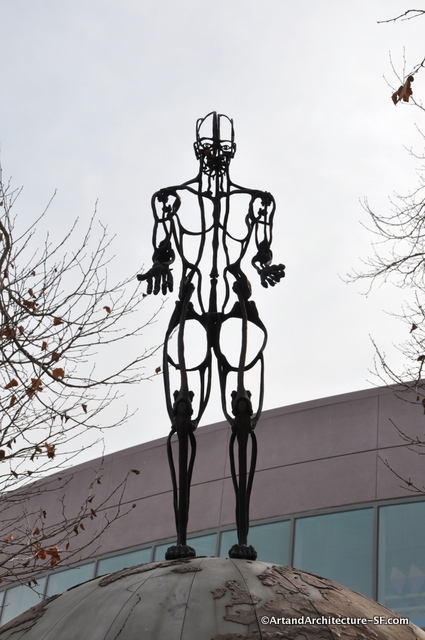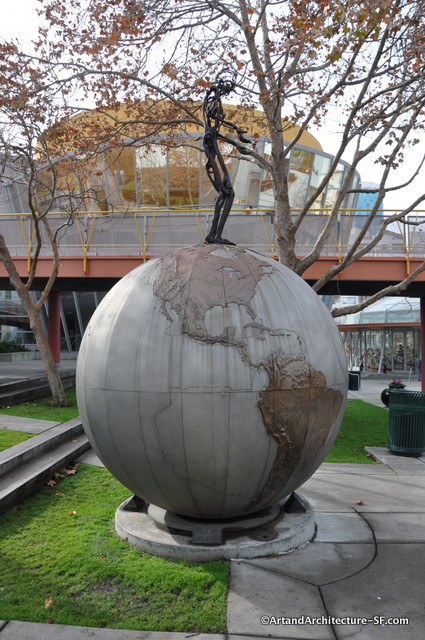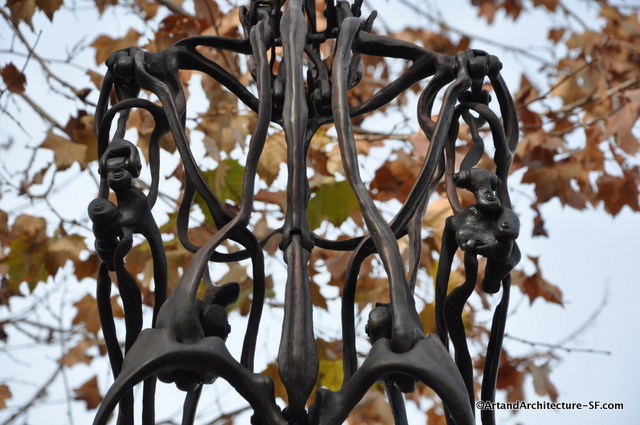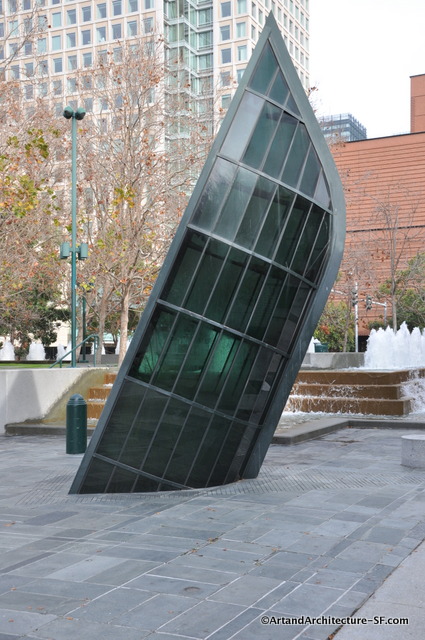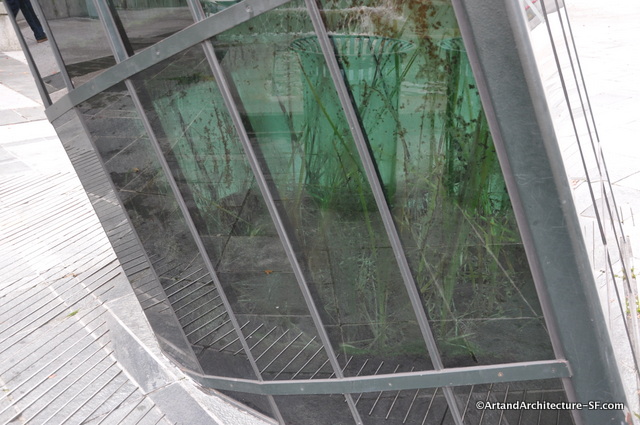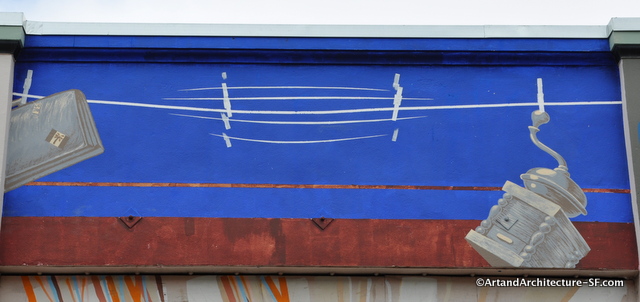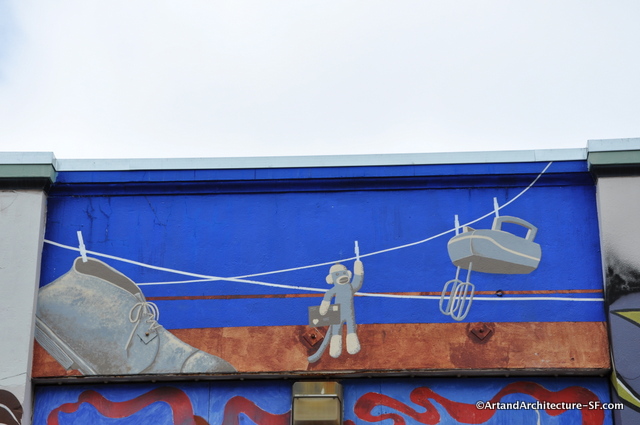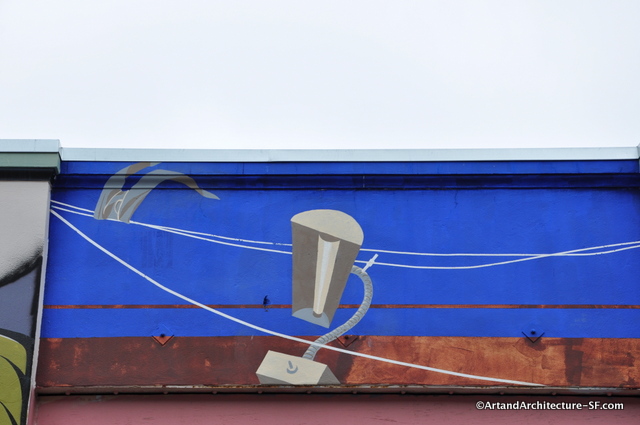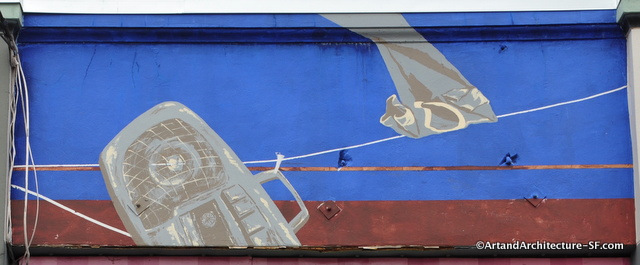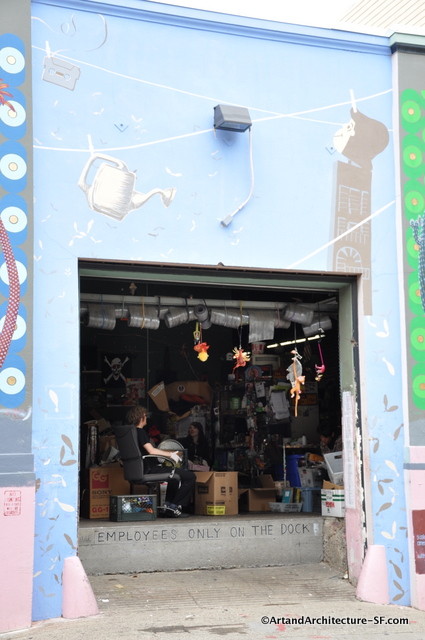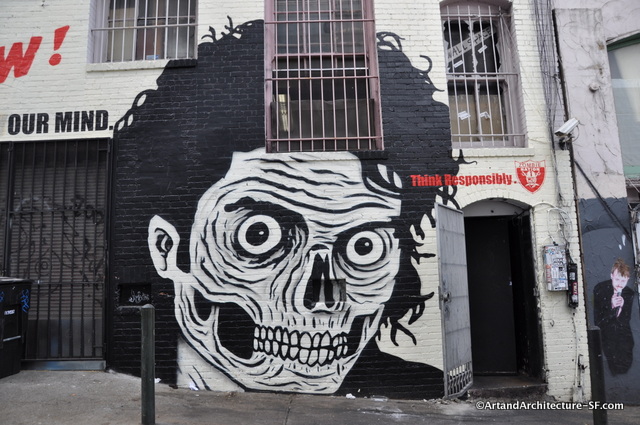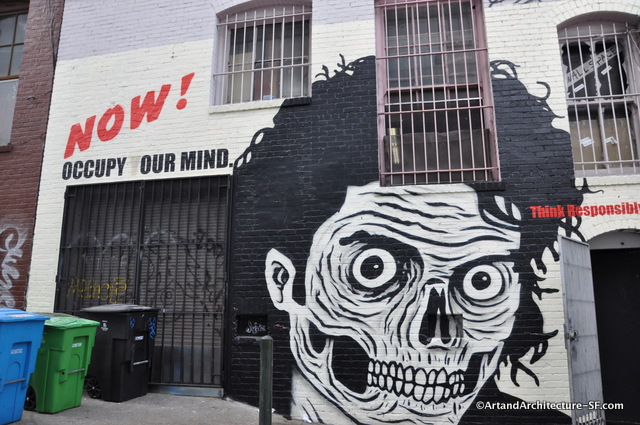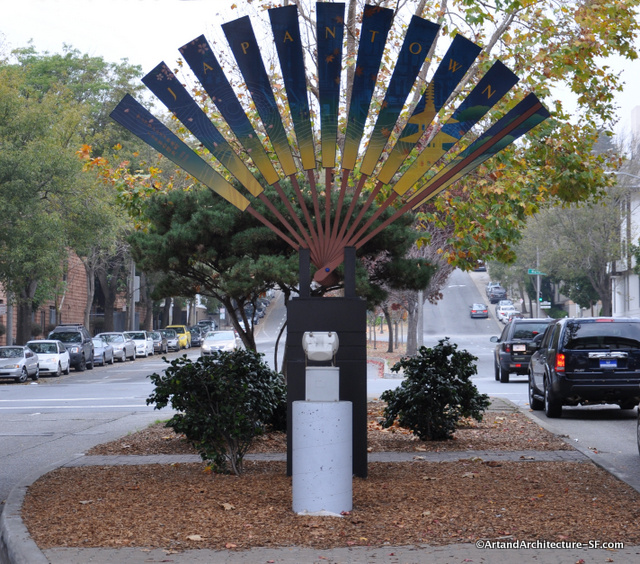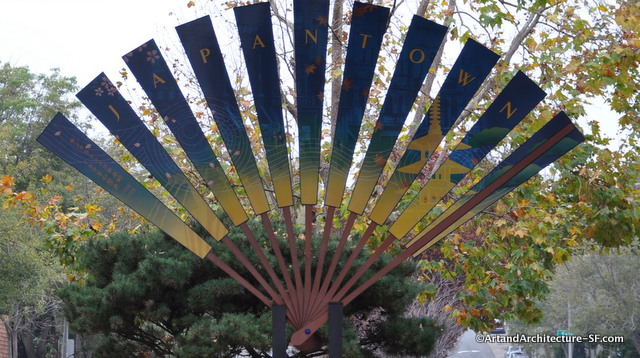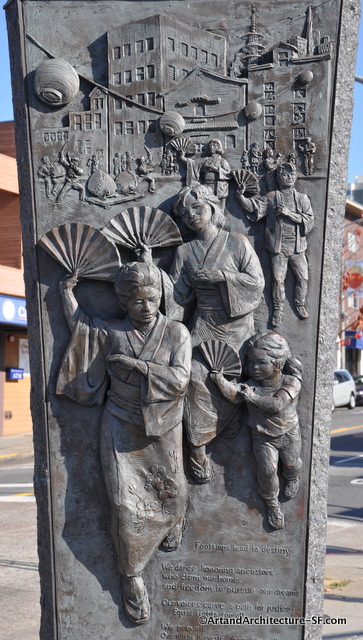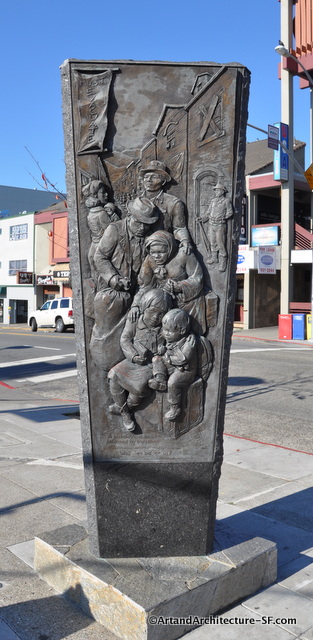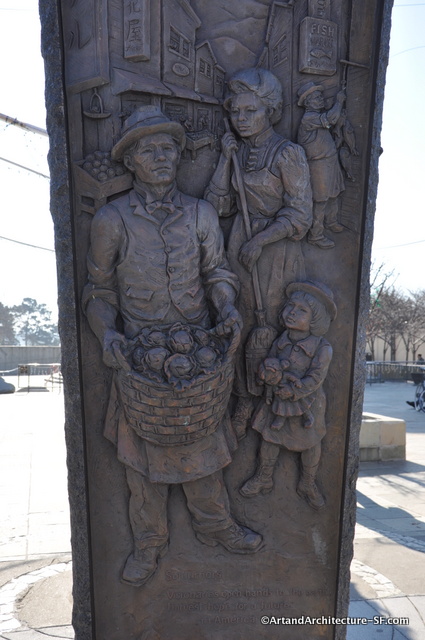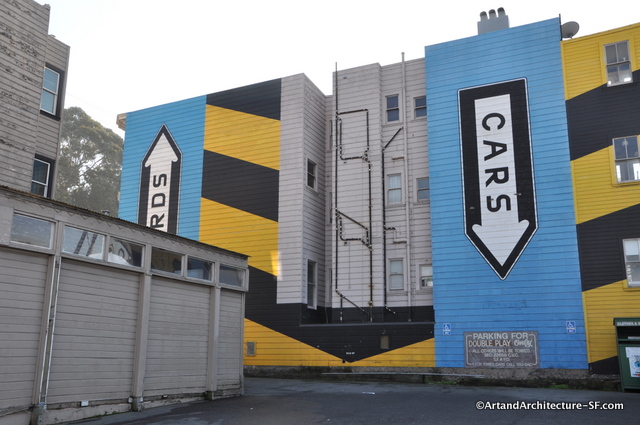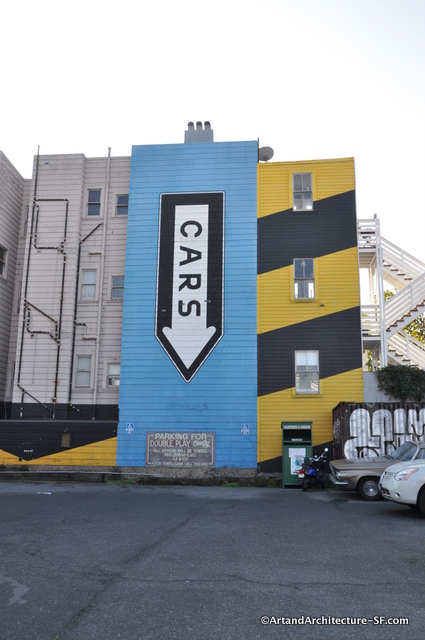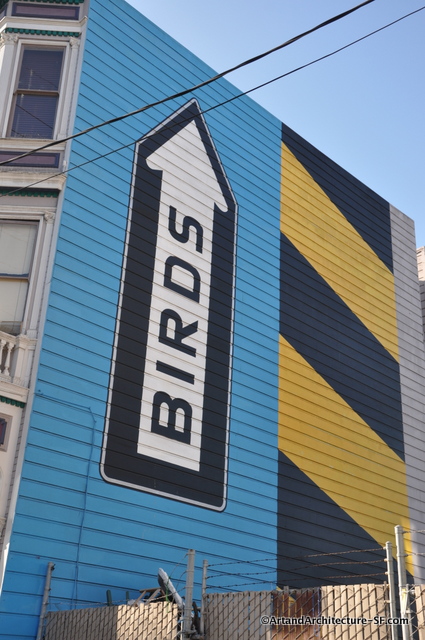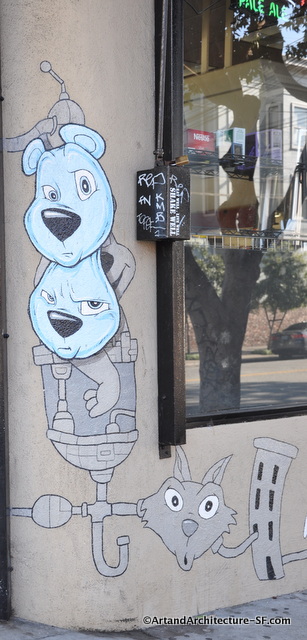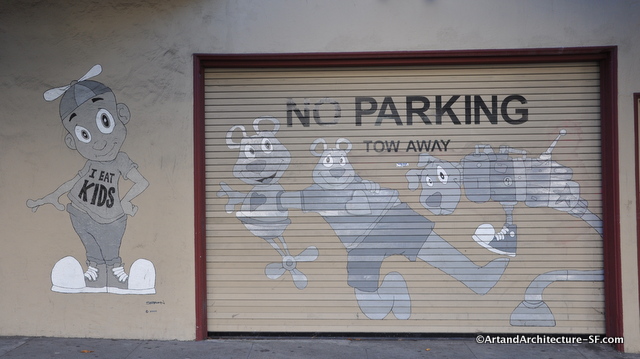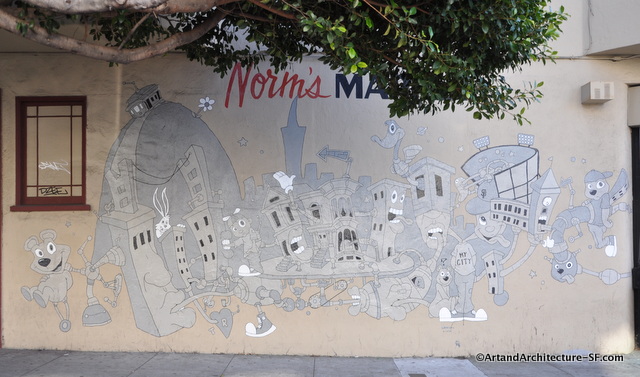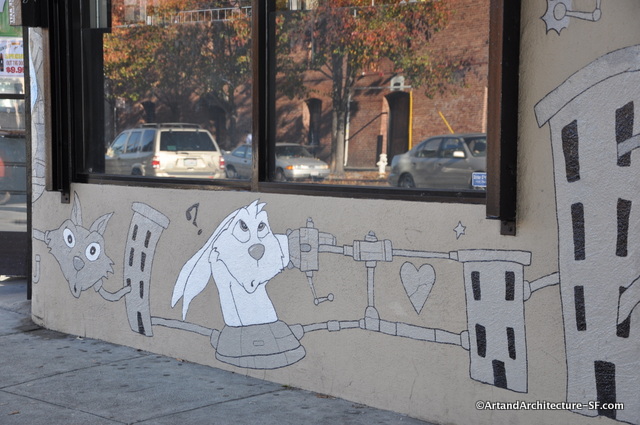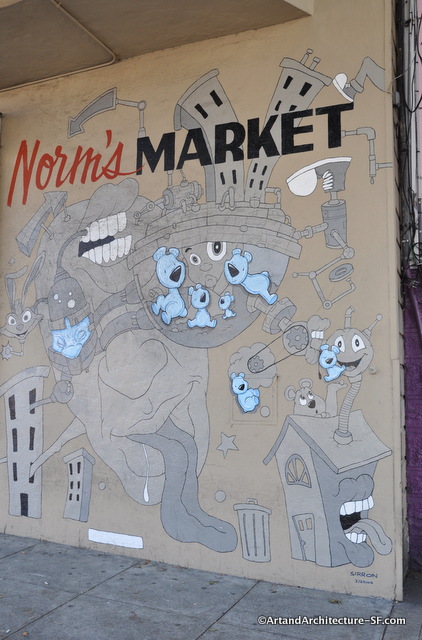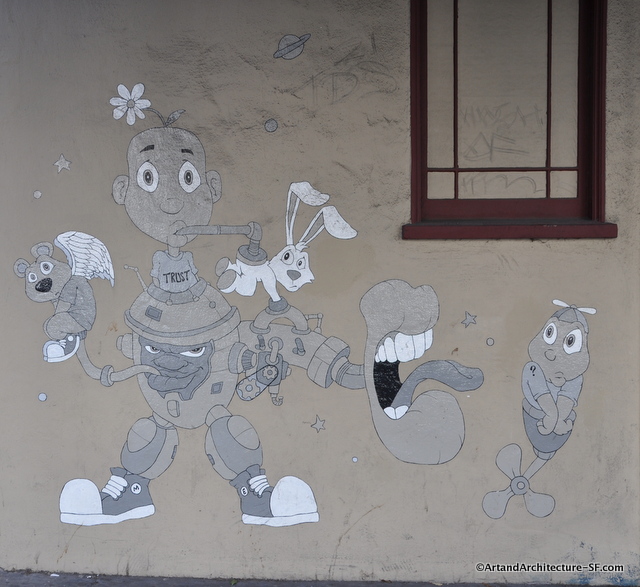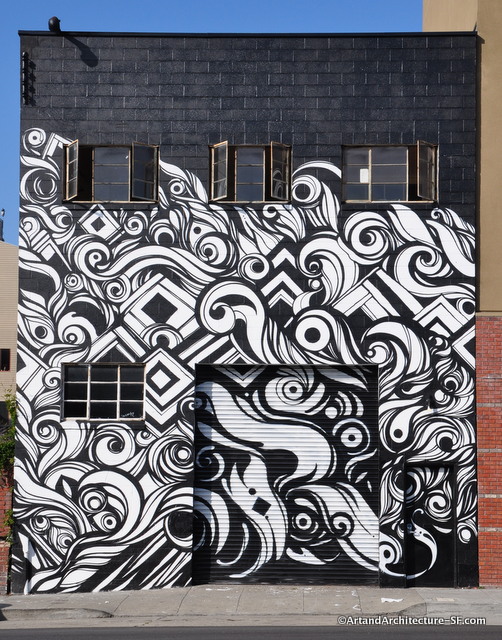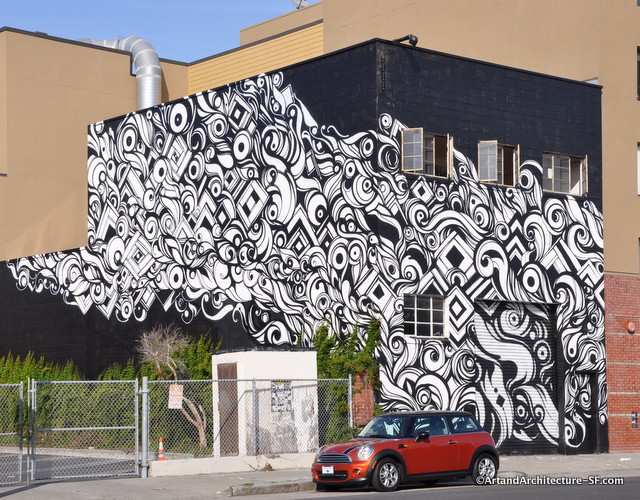If you are interested in the LoPo Art Walk you can follow them on Facebook.
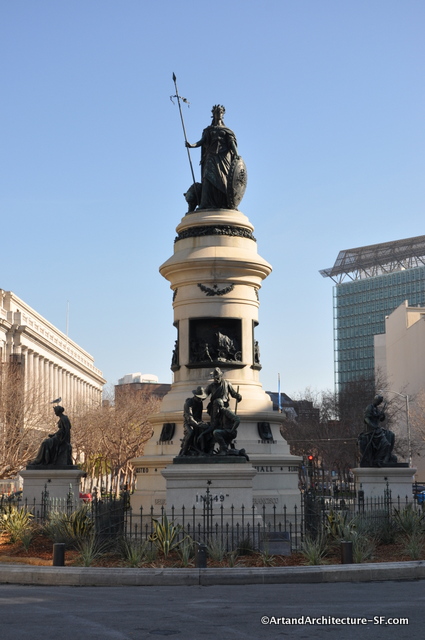 San Francisco’s Pioneer Monument, created by F.H. Happersberger was dedicated to The City by James Lick in 1894. Previously located at Marshall Square, near the intersection of Hyde and Grove, it marked the site of the Old City Hall, destroyed by fire in the earthquake of 1906. During the renovation of the new San Francisco Library there were plans to relocate it, preservationists opposed this relocation, wishing to retain the marker as the last tie to the vanished city hall. It now sits between the new Asian Art Museum and the new San Francisco Library.
San Francisco’s Pioneer Monument, created by F.H. Happersberger was dedicated to The City by James Lick in 1894. Previously located at Marshall Square, near the intersection of Hyde and Grove, it marked the site of the Old City Hall, destroyed by fire in the earthquake of 1906. During the renovation of the new San Francisco Library there were plans to relocate it, preservationists opposed this relocation, wishing to retain the marker as the last tie to the vanished city hall. It now sits between the new Asian Art Museum and the new San Francisco Library.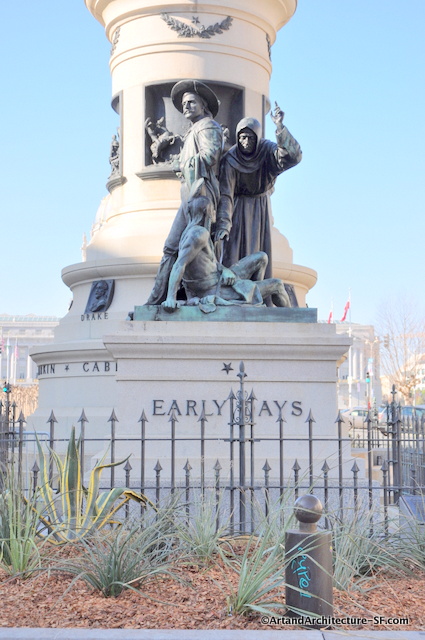 Native Americans opposed the move for a different reason: its demeaning portrayal of native peoples. The Victorian monument, an elaborate series of cast iron figures and bas-reliefs, commemorates the early settlers of California. On a central pedestal, Eureka stands with her shield, 30 feet in the air, in front of the State bear. Around the pedestal’s circumference are inscribed the names of the founders: Lick, Fremont, Drake, Serra, Sutter — stretching from 1648 to 1850.
Native Americans opposed the move for a different reason: its demeaning portrayal of native peoples. The Victorian monument, an elaborate series of cast iron figures and bas-reliefs, commemorates the early settlers of California. On a central pedestal, Eureka stands with her shield, 30 feet in the air, in front of the State bear. Around the pedestal’s circumference are inscribed the names of the founders: Lick, Fremont, Drake, Serra, Sutter — stretching from 1648 to 1850.
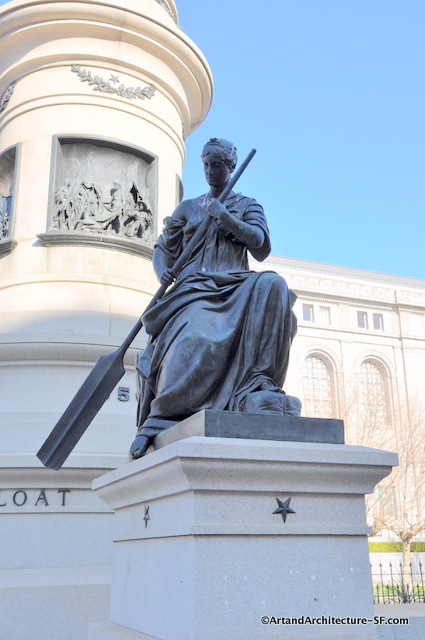 On four lower pedestals, arranged around the column, are life-size and larger figures from California history. Two classically draped goddesses on opposite pedestals represent Agriculture and Commerce, one with a cornucopia and the other, an oar symbolizing the shipping trade. At the other two points are “’49” — a trio of prospectors panning for gold — and “Early Days,” a triumvirate of Mexican vaquero, Franciscan padre, and submissively seated Indian.
On four lower pedestals, arranged around the column, are life-size and larger figures from California history. Two classically draped goddesses on opposite pedestals represent Agriculture and Commerce, one with a cornucopia and the other, an oar symbolizing the shipping trade. At the other two points are “’49” — a trio of prospectors panning for gold — and “Early Days,” a triumvirate of Mexican vaquero, Franciscan padre, and submissively seated Indian.
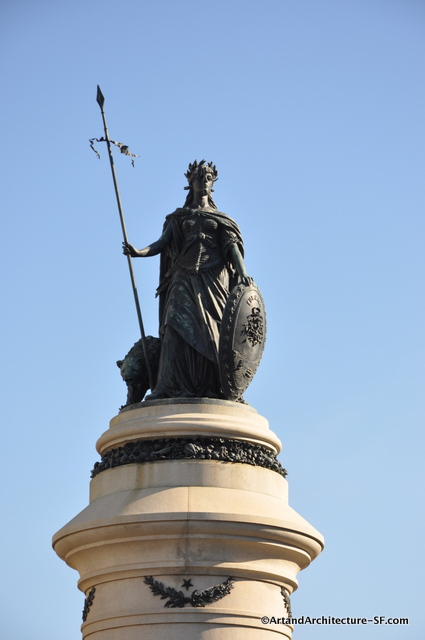 There is an interesting article on the Albion Monitor regarding the controversy of this monument.
There is an interesting article on the Albion Monitor regarding the controversy of this monument.
F.H. Happersberger (1885-1915), his studio was located at 51 Park Avenue in San Francisco.
Happersberger was the son of a Bavarian immigrant pioneer, he was born in Placer County, CA, in 1859. His father, Frank Happersberger, Sr., came west from New York to participate in the Gold Rush. Frank, Jr., spent his youth in San Francisco, and first worked as a wood-carver for the San Francisco firm of Kemp and Hoffman. Happersberger received an eight-year education at a German royal art academy. While still in Europe, he made a successful entry in a competition for a life-size statue of the assassinated President Garfield to be placed in San Francisco’s Golden Gate Park. He returned to San Francisco, the Garfield statue was unveiled triumphantly and from that point, Happersberger was established as a sculptor skilled with the media of marble and bronze.
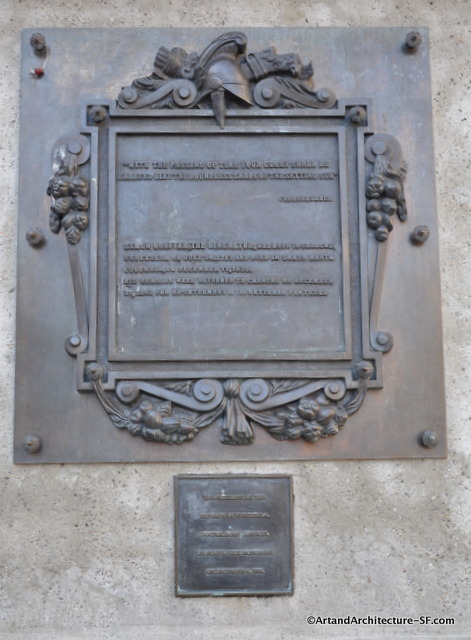 Simón Bolívar, was a Venezuelan military and political leader. Together with José de San Martín, he played a key role in Hispanic-Spanish America’s successful struggle for independence from the Spanish Empire, and is today considered one of the most influential politicians in Latin American history.
Simón Bolívar, was a Venezuelan military and political leader. Together with José de San Martín, he played a key role in Hispanic-Spanish America’s successful struggle for independence from the Spanish Empire, and is today considered one of the most influential politicians in Latin American history.
The President of Venezuela Dr Jaimie Lusinchi dedicated this monument on December 6, 1984.
This is a copy of a sculpture done by Adamo Tadolina in the 19th century. (The original is in Plaza del la Constitucion in Lima, Peru) It was cast by Victor Hugo Barrenchea-Villega. Miriam Gandica Mora was the engineer for the base. It is owned by the City of San Francisco and administered by the San Francisco Arts Commission.
Tadolini, was the grandson of the sculptor Tadolini Petronio. He attended the Accademia di Belle Arti in Bologna. In 1813, Tadolini traveled to Italy and attended the Accademia in Rome. There he made a plaster statue “Ajax cursing the gods”, with this he won a place as an assistant in Canova’s studio.
The plaque reads – A gift from an immigrant Carl Djerassi to his adopted City. Dedicated by San Francisco Arts Commission May 1997.
George Rickey was an American kinetic sculptor born on June 6, 1907 in South Bend, Indiana. When Rickey was a child, his father, an executive with Singer Sewing Machine Company, moved the family to Helensburgh, Scotland. Rickey was educated at Glenalmond College and received a degree in History from Balliol College, Oxford. He spent a short time traveling Europe and studied art in Paris. He then returned to the United States and began teaching at the Groton School. He died at his home in Saint Paul, Minnesota on July 17, 2002 at the age of 95.
George Rickey’s work has appeared in this website before.
Carl Djerassi is an Austrian-American chemist, novelist, and playwright best known for his contribution to the development of the first oral contraceptive pill. In 1959 Djerassi became a professor of chemistry at Stanford University and the president of Syntex Laboratories in Mexico City and Palo Alto, California. The Syntex connection made Djerassi a rich man. He bought a large tract of land in Woodside, California, started a cattle ranch, and built up a large art collection. He started a new company, Zoecon, which focused on pest control without insecticides, using modified insect growth hormones to stop insects from metamorphosing from the larval stage to the pupal and adult stages. He sold Zoecon to Occidental Petroleum.
